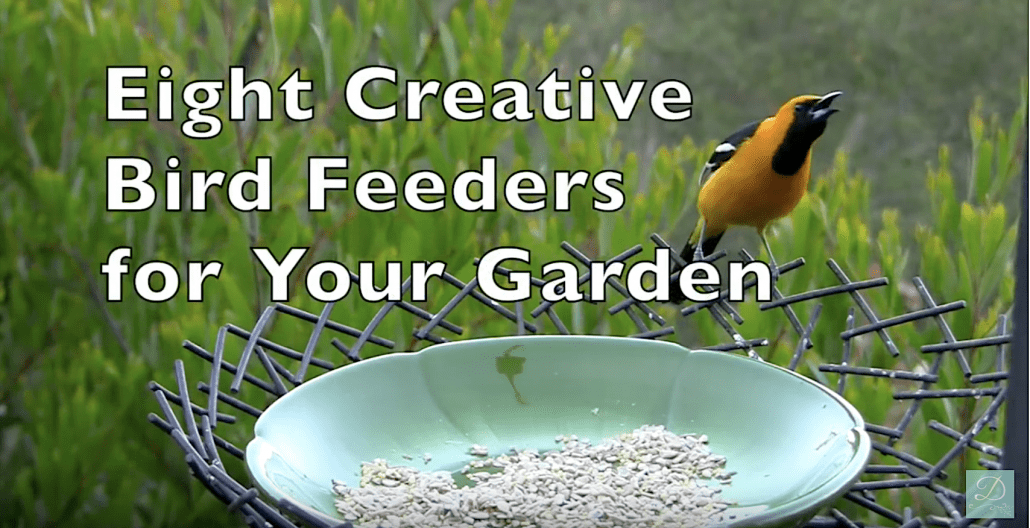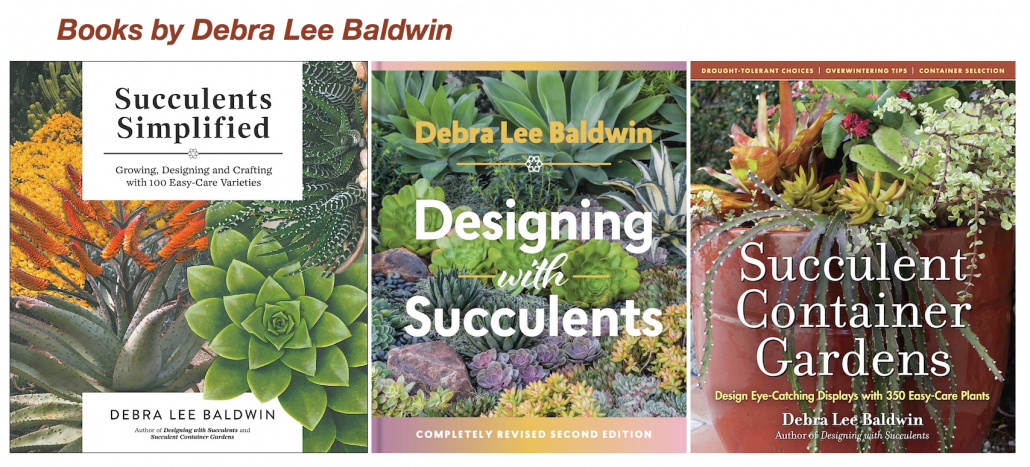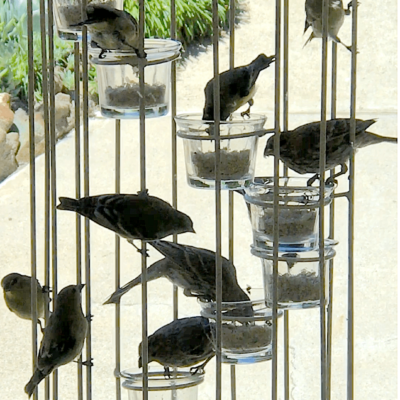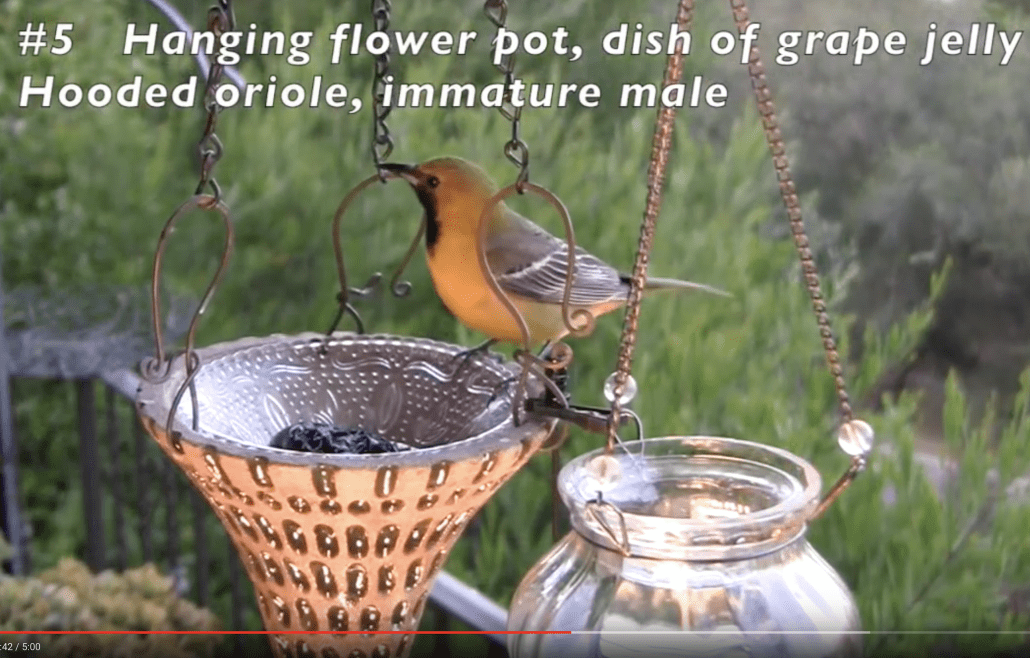
Creative Bird Feeder Materials & How-To
If you'd like to make lovely bird feeders similar to those in my video, Eight Creative Bird Feeders for Your Garden, you'll find materials, suggestions and how-to here.
Depending on the time of year, I'll have as many as 20 birds of a dozen different species at feeders I've positioned outside my office, kitchen and dining room windows. I'm in the foothills northeast of San Diego where native plants such as oaks and fan palms provide nesting sites. The second-floor deck where most of my feeders are located is adjacent to trees with limbs for perching and hiding, is high enough to be safe from cats, and isn't easy for squirrels or nocturnal varmints to access.
It's helpful to have:
-- A dozen rustproof heavy-duty steel S-hooks, each about 3 inches long
-- About 15 feet of soft, flexible, rustproof wire.
-- A 6-foot-tall wrought-iron free-standing plant stand designed for hanging baskets.
If you'll be hanging feeders from your home's eaves, you'll also need a hammer and nails, several feet of chain, and a stepladder.
Optional: Spray-paint for metal. I paint my repurposed metal and wire feeders with Rust-Oleum so they're all the same color (to match my home's trim).
Essential: Keep them clean! It's better to not put food out than to let feeders get dirty. Feeding birds is messy. Every evening, I hose the area, bring in the feeders, and clean them with hot water and dish soap. I don't let food come into contact with bird droppings, which can spread diseases. And if I see a sick bird at a feeder, I stop putting out food for several days.
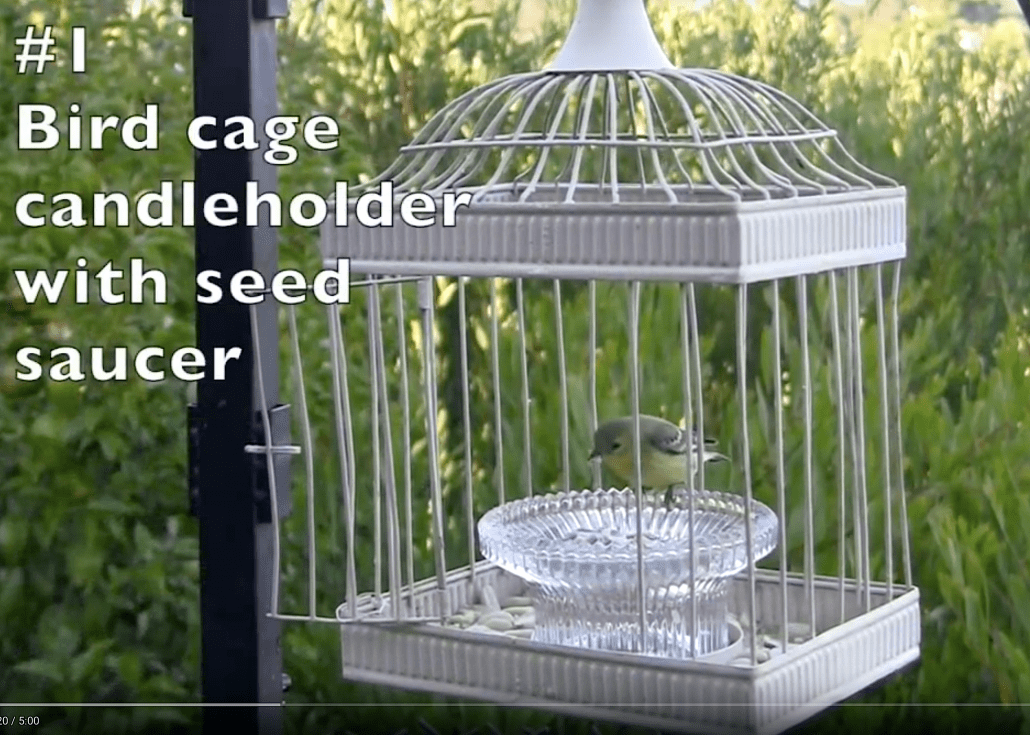
I found this ornamental bird cage and glass dish---both candleholders---at a thrift store. About $6 total. The goldfinch was gratis.
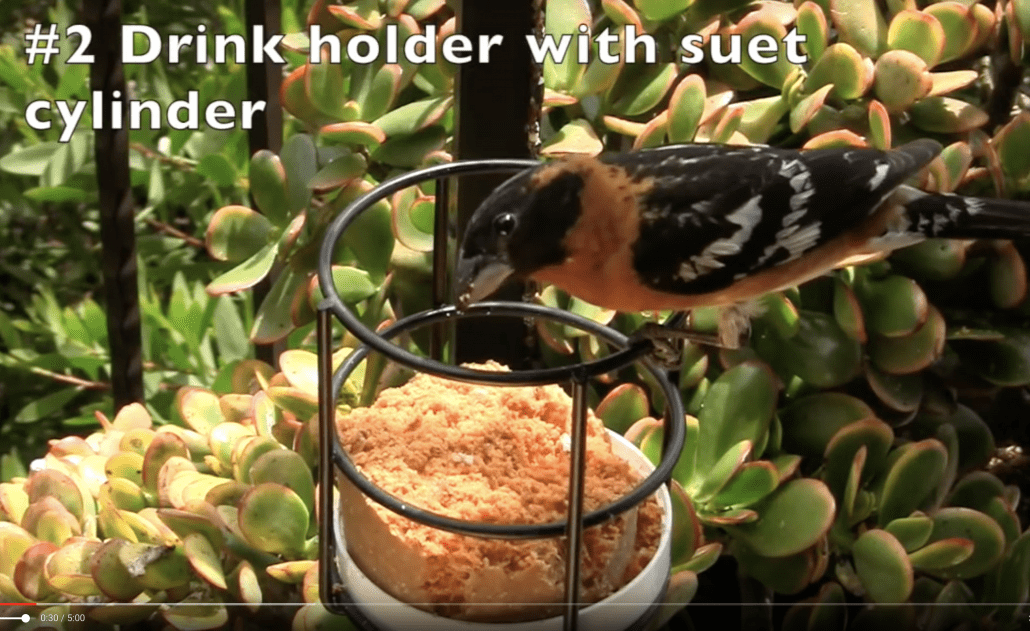
Metal drink holders (aka "beverage stakes") are designed to go next to lawn chairs to hold bottles or soda cans. They're perfect for suet cylinders, providing you set each in a plastic lid that keeps the suet from crumbling away. (I give my birds suet year-round, even though I live in a mild climate, because the extra fat and protein encourages brood production. It also attracts woodpeckers, grosbeaks and jays.) Each holder has a long vertical bar for staking into the ground. I placed this one, being enjoyed by a male grosbeak, in the same 5-gallon plant container shown below.

Small dishes and votive cups are handy for peanuts and seeds. But once they get wet, birds won't eat out of them, so clean and refill them daily. The bird is a spotted towhee.

The hanging candleholders ("tea light lanterns") are available at Cost Plus World Market and Amazon. In them are 2.5-inch-diameter glass tea light holders ("votive holders") that contain grape jelly (from any supermarket) and sugar water (1 cup sugar to 4 cups water, boil and let cool). You don't want to fill the entire candleholder with food because it's too much, will likely get wet or go to waste, and is hard to clean. You also may have to unhook the feeders to bring them inside for cleaning, which means getting out a stepladder. Tea light holders, on the other hand, can easily be removed, washed and dropped back into the candleholders. Even though they're stable enough that their contents won't splash onto birds, like the Anna's hummingbird at lower right, it's best not fill them to the brim.

The flower pot that the oriole is sitting on is by Fallbrook, CA artist-potter Alicia Iraclides, who also fashions the lovely copper loops that her pots hang from. The glass dish came from a thrift store (or possibly my kitchen cupboard). Regardless, at 5 inches in diameter, it's a perfect fit. It doesn't slide around, is shallow enough (1-1/2 inches) for birds to easily access, yet also is deep and wide enough to hold the right amount of food (1/4 cup of grape jelly or 1/2 cup of seed mix).

This 14-inch diameter metal bird cage came from Home Goods---a seasonal item. Here's a similar one on Amazon. Also this "lantern." The bars are about an inch apart, which is perfect for letting in small birds (like finches) and keeping out large ones (like jays and doves). If bars in your ornamental bird cage/bird feeder are closer together, prop the door open or bend and spread the wires so that little birds can come and go. I lined the cage with a paper towel and placed a glass saucer atop it, full of seed mix. This makes it easy to clean and helps elevate the birds for better viewing.

Both this stylized metal "nest" (16 inches in diameter) and bowl-like platter (10 inches) were thrift-store finds. I used coated, rustproof wire to secure the nest to the corner of the metal deck railing. I decided not to spray-paint it beige because it's the same color of the railing. In the dish is Wild Birds Unlimited's No Mess Blend which includes millet (which doves and quail like) and sunflower and nut bits that other birds enjoy. I also provide raw peanuts and sunflower seeds. Jays and titmice eat peanuts; finches prefer sunflower seeds---and nyger, but that's too messy, perishable and expensive. There's a grosbeak at left and oak titmouse at top.
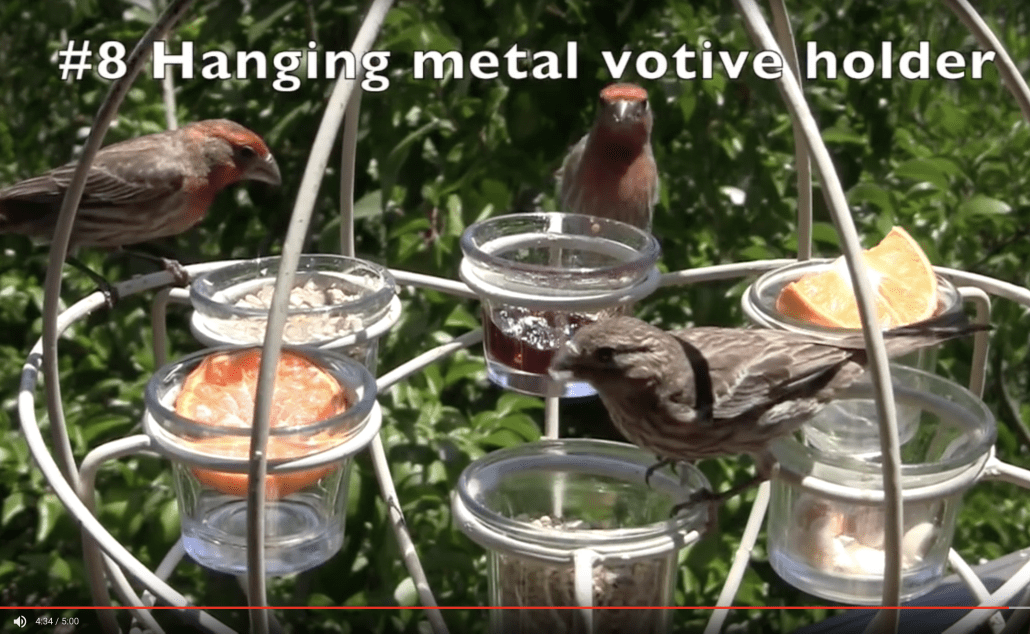
This spherical candleholder came from a second-hand shop that specializes in utilitarian antiques. It originally was black, so I spray-painted it beige. Items like this are fun to hunt for and not difficult to find (hint: they're often hanging from the ceiling, so look up). The best ones have an open design that lets you easily view birds that visit. Yes, birds will use feeders made of wood, plastic and other non-transparent materials, but isn't getting a good look at these flitting, fleeting creatures what birdwatching is all about?
On my YouTube channel, check out my playlist: Debra's Bird Feeders.
Related info on this site:
My Bird-Feeder Hobby
It may surprise you that my hobby is making bird feeders for my garden from repurposed objects. Most of my bird feeders are elegant and pretty, which is my preference. But a silly one—made from a brand-new bra (not mine, it’s way too big, ha)—went viral on Facebook and has had 26,000,000 views. Yep. Twenty-six.…
See Baby Birds (Fledglings) at Feeders
Fledglings are toddlers of the bird world: cute, endearing and fun to watch. They’re awkward, curious, beg loudly, and don’t let their parents out of their sight. You’ll see nine different types of western birds shortly after they’ve left the nest. Look for these flying jewels in your own backyard. I show parents and offspring at unconventional feeders

